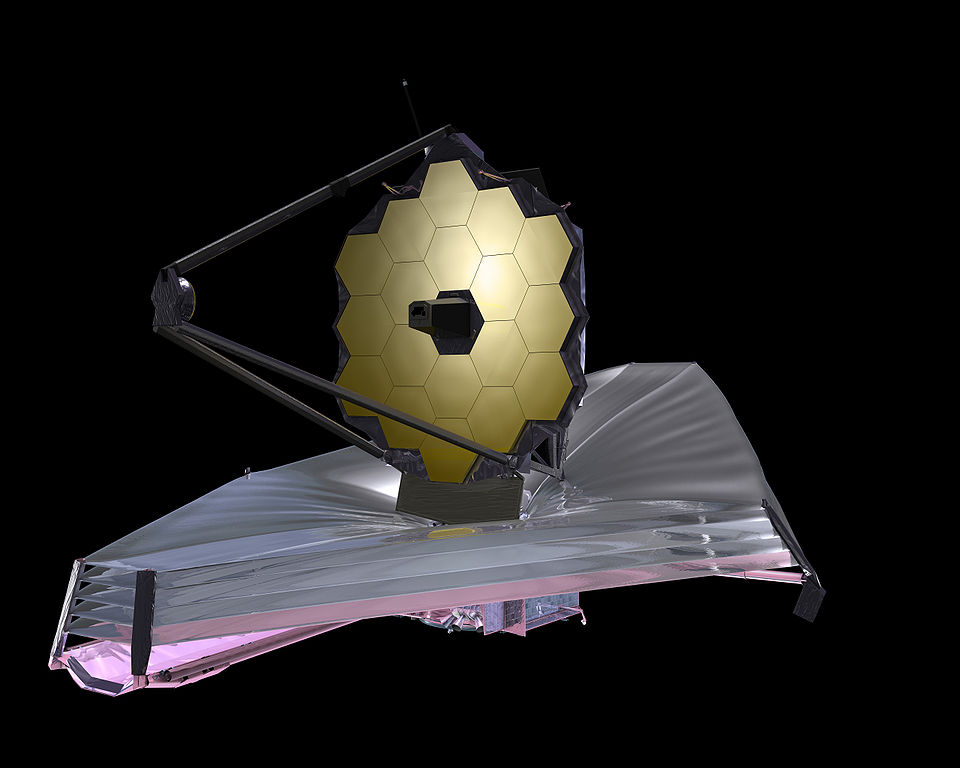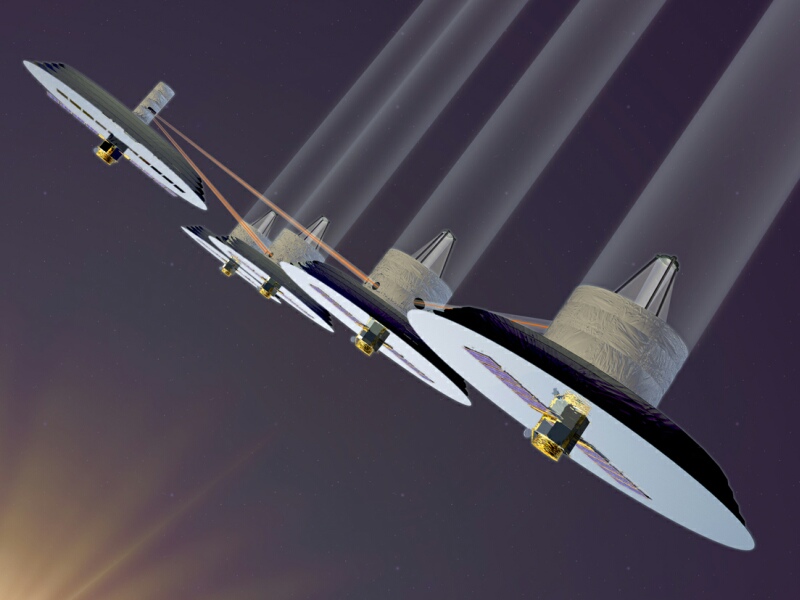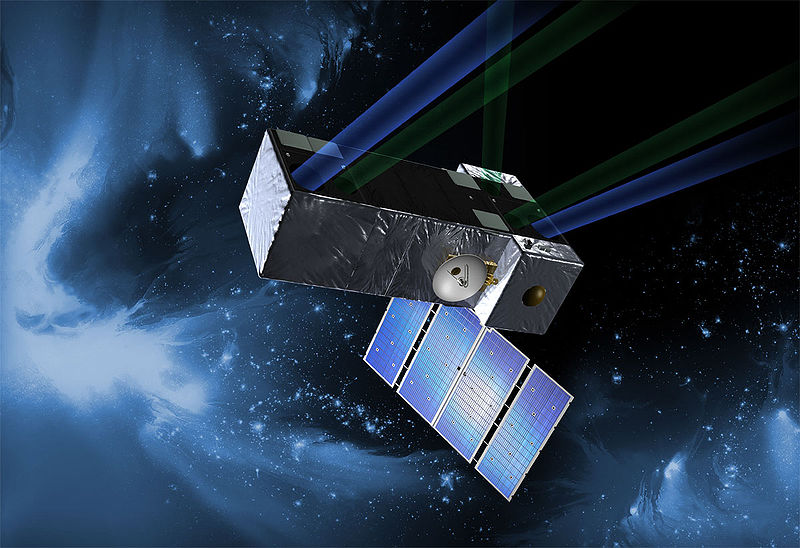NASA’s space-science program is in crisis. This is partly due to limitations on the overall NASA budget and competition from other programs, such as the Senate-mandated Space Launch System, but it’s mainly due to budget overruns within the space-science program, particularly the flagship James Webb Space Telescope.
The JWST was supposed to cost $1.6 billion and launch in 2011. Now, it is estimated that the telescope will cost $8.7 billion and won’t launch until 2018. The House Appropriations Committee tried to cancel the JWST in 2011, because of the cost overruns. The Senate saved the JWST, but the cost of its salvation is likely to be major cuts in NASA’s unmanned Mars programs and other science missions.
JWST may have dodged the bullet in 2011, but there is no guarantee it will continue to do so in the future, especially if costs continue to escalate. So, now seems like a good time to ask the question: If the James Webb Space Telescope is cancelled, what could NASA do in its place?
It’s important to note that the technology of large ground-based telescopes has improved greatly in recent years. For decades, the 200-inch Hale telescope was the largest telescope in the world and, many astronomers felt, the largest telescope that would ever be built since the Earth’s atmosphere placed useful limit on telescope size. The development of adaptive optics has largely removed that limit [for some wavelengths]. New telescopes such as the 330-inch Large Binocular Telescope, with a 468-inch effective resolution, clearly outclass Hale and even exceed the resolving capabilities of space-based telescopes. The multi-mirror Giant Magellan Telescope, now under construction at the Las Campanas Observatory in Chile, will have an effective resolution of 960 inches with 10 times the resolving power that of the Hubble Space Telescope and 5 times the resolving power of JWST. The European Extremely Large Telescope will have 6 times the resolving power of JWST, at one-sixth the cost.
Space-based telescopes have some unique advantages, however, including the ability to observe at wavelengths which do not make it through the atmosphere. (The JWST is designed for infrared, rather than visible-light, observing.) That’s a technical argument that is easily lost on the public, however, which is used to seeing pretty pictures from facilities like the Hubble Space Telescope. At some point, taxpayers (and even some astronomers) are likely to ask whether $8.7 billion spent on a single project like JWST could be better spent building new telescopes here on Earth.
The cost of ground-based telescopes is also escalating, however. The price tag for the largest ground-based telescopes is starting to rival that of space projects. The Giant Magellan Telescope will cost a reported $600 million. The Thirty-Meter Telescope planned for Mauna Kea will cost an estimated $1.2 billion. Engineering design studies alone have cost a reported $100 million to date. That is considerably less than JWST, but it is still more than the Spitzer Space Telescope, which cost around $500 million.
Advances in microelectronics and other technologies have driven down the cost of small unmanned space missions in recent years, although those benefits are still mostly unseen in larger projects. Could new technologies, combined with the development of lower-cost launch systems such as the SpaceX Falcon, allow NASA to build space-based telescopes that perform world-class science at costs comparable to (or perhaps even better than) ground-based facilities?
The answer may be “yes.”
The main factor which makes space telescopes like Hubble and JWST so expensive is the size of the main mirror. Large-aperture mirrors are essential for high-resolution images, but large mirrors are heavy. JWST uses an innovative folding mirror that is easier to package for launch, but still, the size of the mirror means the overall satellite is heavy and expensive.
Optical interferometry is a new technique that allows astronomers to synthesize a very large effective aperture using widely separated telescopes with relatively small mirrors. Interferometry has been used in radio astronomy for decades, but only recently has computer technology advanced to the point where it’s possible to use interferometry for optical astronomy.
Optical interferometry has been used on Earth, but its potential in space is far greater. Because it allows for very large effective apertures without large physical mirrors, optical interferometry could enable the development of very powerful, yet light-weight and low-cost, instruments. In the long term, space-based interferometry could allow for instruments where the baseline (separation between the mirrors) exceeds the diameter of the Earth. The effective aperture and resolving power of such instruments would be enormous. In principle, there is no limit to how large a space-based interferometer could be. (In practice, the engineering problems are formidable, but fortunately these problems mostly lie in areas like computation, guidance, and control where electronics are making rapid advances.)
Space-based optical interferometry would enable observations which astronomers can only dream about today. For example, they could begin high-resolution imaging of many of the 760 exoplanets that have already begin discovered. The simulated images below show what is possible with very-large-baseline interferometry. For the top images, the baseline is larger than the diameter of the Earth.
NASA considers optical interferometry to be a high-risk, high-payoff technology. It has shown considerable interest in the past and proposed several interferometry missions, but none of those proposed missions have actually been developed.
In the late 1990’s, NASA planned to fly a space-based interferometry experiment called Deep Space 3 as part of the New Millennium program of low-cost technology-development missions. Deep Space Three was conceived as a constellation of two small satellites flying in formation at precisely controlled distances. During the course of the mission, this distance would have been adjusted from 50 meters to 1 kilometer. Deep Space 3 was scheduled for launch in 2003.
Unfortunately, Deep Space 3 was cancelled, along with other “Faster, Better, Cheaper” missions after the highly publicized failures of the Mars Climate Orbiter and the Mars Polar Lander. MCO and MPL were not truly low-cost missions – they were medium cost – and while two low-cost Deep Space 2 probes were lost along with MPL, they were merely along for the ride and not responsible for the failure. Nevertheless, critics used the failures to demagogue the Faster, Better, Cheaper program, bringing about an end to NASA’s low-cost unmanned space missions. (With recent cuts to the planetary-science program, the wisdom of this decision is being called into question. See Should NASA reconsider the Faster Better, Cheaper Approach to exploring Mars?)
One of the more ambitious of the proposed interferometry missions was the Terrestrial Planet Finder. As shown below, TPS would consist of four or five free-flyers in close formation. The orange lines connecting the satellites represent communications links, not a physical truss. Interferometry baselines of 40 to 100 meters were considered. (The artist has taken some artistic license by showing the satellites in closer formation.)
The primary mission of TPF would be to detect Earth-like planets and search for signs of life by measuring their spectra. It was also anticipated that TPF would be used to study star and planet formation, stellar evolution and cosmic recycling, the formation and growth of black holes, and galaxy formation and evolution.
In 2006, a House committee approved the project for a 2012-2015 launch. Unfortunately, no funding was ever appropriated. While TPF has not been officially cancelled, it remains “on hold” with the (optimistically) expected launch date slipping until 2020.
The Space Interferometry Mission, or SIM Lite Astrometric Observatory, was more conventional in design. SIM Lite would be a single satellite with two telescopes operating as an interferometer with a 6-meter baseline. NASA envisioned SIM Lite as a general-purpose astronomical observatory. SIM Lite would search for Earth-like planets. It would also study dark matter and the formation of galaxies, stellar populations, and supermassive blacks holes and quasars. The scientific objections are described in a downloadable ebook.
With a baseline of 40-100 meters, rather than 6 meters, Terrestrial Planet Finder would have a theoretical resolution an order of magnitude better than SIM Lite. The station-keeping requirements for multiple free-flyers make the mission more challenging, however. Once again, high risk means high payoff. Much of the risk would have been retired by now, however, if the Deep Space 3 mission had been flown as planned.
SIM Lite was expected to cost about $1.9 billion. If that figure is accurate, it would have been a bargain compared to JWST. The advantages of free-flyers over physical structures are obvious, however. Astronomer Geoff Marcy, who has discovered more exoplanets than any other human, has said bluntly, “Free-flying interferometers in space are the only plausible future for astrophysics.″ He likens Terrestrial Planet Finder to the human genome project. Without an instrument like TPF, Marcy says planet hunters will remain mere census takers.
Innovative approaches like optical interferometry will benefit greatly from coming revolution in low-cost launch. By eliminating the need to launch large single-piece mirrors, optical interferometers can reduce astronomy’s dependence on expensive heavy-lift rockets. Each of the TPF free-flyers, for example, would be less than 1000 kilograms. They could take advantage of novel, low-cost launch architectures, such as small reusable launch vehicles combined with on-orbit refueling. On-orbit construction is another possibility for segmented mirrors and truss structures that are too large to launch from Earth.
Right now, the James Webb Space Telescope is NASA’s “Plan A” for space-based astronomy. Given the budgetary and programmatic uncertainty that surrounds JWST, it seems only prudent to start considering a Plan B. Space-based optical interferometry could be the Plan B that is greater than Plan A. At the very least, NASA should consider doing a low-cost technology-development mission like Deep Space 3 to pave the way for the future.





“… the Earth’s atmosphere placed useful limit on telescope size. The development of adaptive optics has largely removed that limit.”
Not really. Adaptive optics only works in the infrared (wavelengths greater than about one micrometer). The computer power required to calculate the desired mirror adjustments, the number of actuators required to make those adjustments, and the required speed of those actuators, are all rather steep exponential functions of the frequency you want to look at. So if it ever becomes practical to extend adaptive optics into the visible region of the spectrum, it won’t be soon. Until then, the only way to get diffraction-limited resolution at wavelengths shorter than one micrometer is to get above the atmosphere.
Great article. As I read it I had several questions.
1. If a phased approach was considered for the TPS, what could one do with just one mirror? Could the project bootstrap itself and and perform risk reduction at the same time?
2. Could these satellites be purposed for anything else? Example: Earth Observation for commercial/military purposes?
3. Can you provide any links to the studies for the optical interferometry satellite projects? I’d would be interesting in knowing what the payload size is for just one mirror.
Derek, the payload mass for a single TPF mirror would be under 1000 kg — about one English ton.
At that size, development costs would dwarf launch costs — even with current systems.
A single mirror wouldn’t accomplish any significant risk reduction since the major risks are in the formation flying and station keeping. A better way to do risk reduction would be to fly a constellation of smaller mirror, as NASA planned to do with Deep Space 3.
The military and spooks would certainly view this as a valuable dual-use technology. It probably wouldn’t be useful for commercial Earth observation since the resolution of commercial satellites is limited for political reasons. It might be useful if you wanted to locate a remote-sensing satellite higher up, though. A geosynchronous satellite could provide constant coverage of one side of the Earth.
Derek, here are the relevant portals for the two major projects:
TPF — http://www.terrestrial-planet-finder.com
SIM Lite — sim.jpl.nasa.gov
There isn’t really a good portal site for Deep Space 3. You’ll have to hunt around for information on it.
The government is too busy wasting assets and money to even consider advancing mankind.Greed in development has obviously contributed.